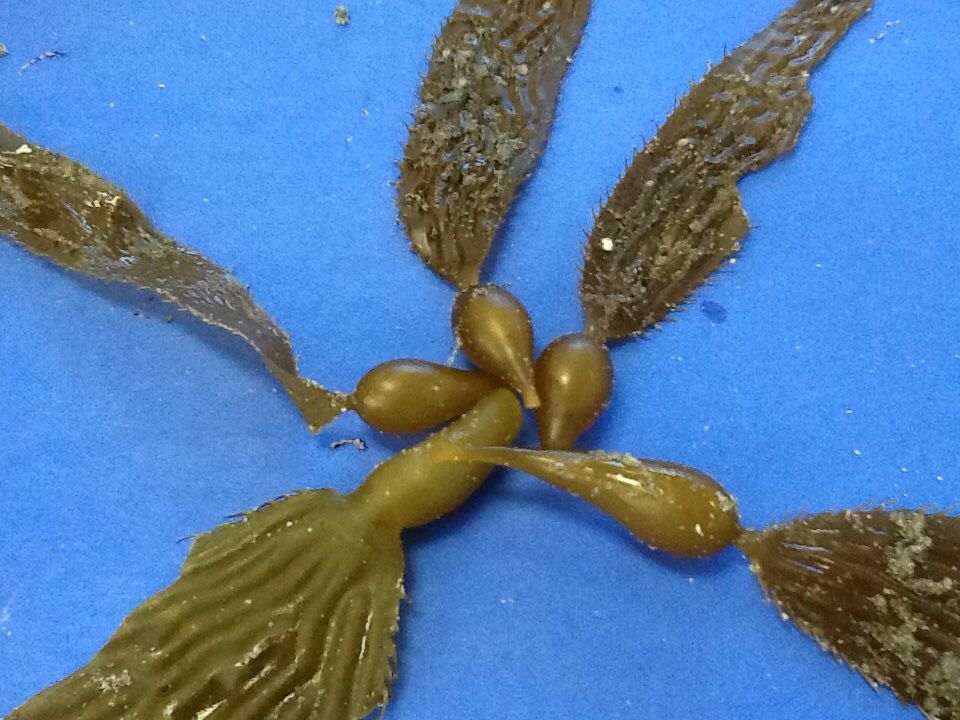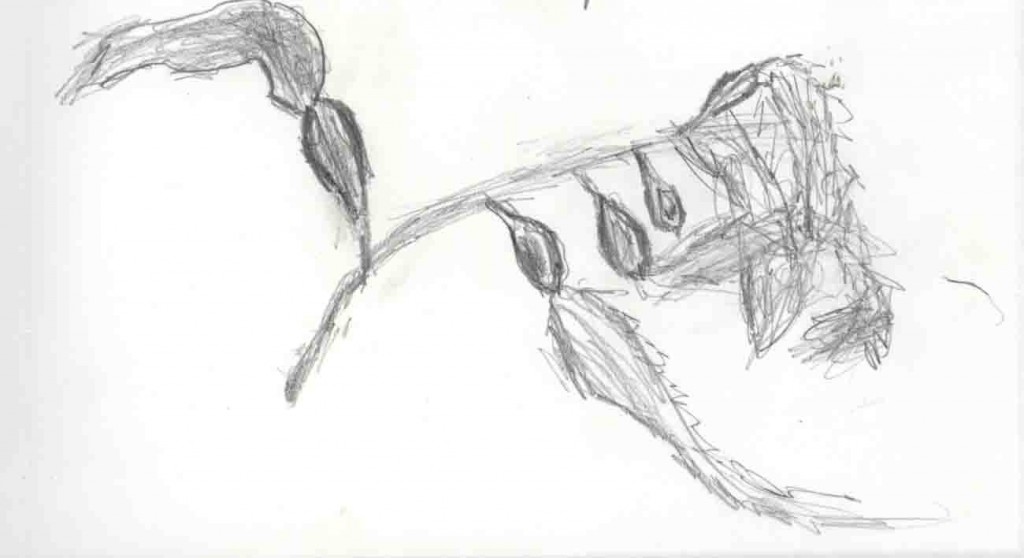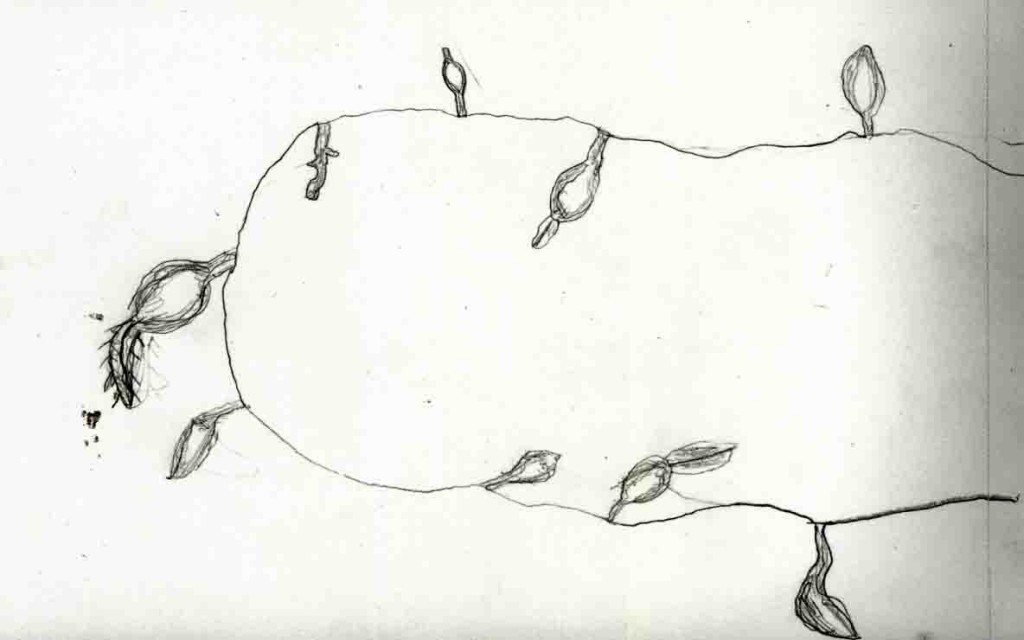Having strong mentors is incredibly helpful when learning something new or advancing in a skill. Even the most accomplished writers turn to mentors, and so as fledgling writers we study published authors to learn new craft. A favorite type of science writing in our class is using a mentor text that has nothing to do with the topic we’re studying and applying this craft or style to a piece of writing filled with science facts. It scaffolds, or supports, the writing in science so students can focus on beautiful language and weaving in facts.
Kate Messner’s Over and Under the Snow provided us a “whole text” mentor rather than just studying one sentence. We first read the book as readers, enjoying her beautiful language explaining who lives under the snow in the winter. We then read it again as writers, focusing on her juxtapositions of what a dad-and-son team experience as they’re cross-country skiing in snow, versus what happens with the various little critters living below.
Messner writes, “Over the snow I climb, digging my edges so I don’t slide back down. Under the snow, voles scratch through slippery tunnels, searching for morsels from summer feasts.” When reading her work, it quickly becomes apparent to students that Kate Messner is a genius at weaving beautiful sensory language to eloquently paint a picture in the reader’s mind.
Kate Messner’s newest book, Up in the Garden and Down in the Dirt further provides a similar structure to help students understand they’re not beholden to the exact words of “over and under” to show juxtaposition and that comparing “up and down” or “inside and outside” work equally as well.
Towards the end of a science unit on the kelp forest, students took the structure of juxtaposition that they learned from Messner and wove in facts they had learned about this special ecosystem. In addition to learning from Messner’s structure, we also noticed that she used incredibly effective, vivacious verbs. After writing a first draft, students spent some time identifying the verbs they had chosen and revising with even more interesting verbs. As teachers, we love to see evidence of our teaching—and the mentors we study—in student writing. The idea of using mentor text to help scaffold writing is not just that it provides a one-hit wonder, but that the structure of the text becomes a “tool” we can add to our “writer’s tool box” for future use…
In lieu of posting all 43 students’s writing, here are a few examples. See if you think you can detect Kate Messner’s mentorship in these pieces…
In the Kelp Forest
Over the kelp forest
seagulls are hungrily eating fish,
under the kelp forest sand crabs
are hiding in holdfasts.
On top of the canopy
sea snails are slithering,
under the canopy bat stars lie
on the rocky surface.
High in the forest
sea otters swim,
low in the forest,
eels are diving.
Eddie Cornell
1st Grade
Over and Under the Kelp Forest
Sea birds flap their wings over the kelp,
looking for tasty food for dinner,
while under the kelp the fish
try to find an escape from the sea birds.
Under the kelp, the sea lions hunt and play.
Over the kelp the sea otters
get wrapped up in seaweed
to keep from drifting while they eat.
Over the kelp the waves crash,
making crackling sounds,
while under the kelp
the sharks lick their lips
for the big hunt.
Emil Adame
2nd Grade
Up and Down in the Kelp Forest
Over the kelp forest, on the knotted canopy,
a sea otter prepares for a yummy meal
with roaring waves about,
on his belly table!
Under the waves,
a sea urchin chomps and gobbles at the holdfast,
until the tiniest crumbs are left of it.
Up on the canopy of the kelp forest,
a sea bird wades, and patiently waits.
Under the tangled canopy, a school of fish
spots big orange feet flowing in the sunlight
and they hastily swim away!
Under the slimy canopy, a shark lurks,
he spots a fish and past the kelp he glides,
swimming, swimming, speedy, speedy,
swimming, speedy, speedy!
Over the waves, on the greasy, rubbery kelp
a sea snail slurps and chomps
up a kelp leaf,
minding his own business on the canopy!
McKinley Blehm
3rd Grade
Another favorite strategy of ours is to pair art with writing in science. Luckily for us, Mrs. Candelaria, our science teacher, brought in mounds of kelp for observation. Touching, exploring, and answering questions about this rubbery marine plant helps our little learners to experience richer, deeper learning. After observing the kelp in science lab, we got out our iPads to take close-up photos of the kelp, and our sketch notebooks to try our hand (and pencil!) at capturing the fronds, stipes, holdfasts, veins and nuances of this prolific marine plant. And, hey, did you know, that marine plants provide 80% of our world’s oxygen? A pretty important plant, wouldn’t you say?
A few of our photos and sketches…
(Photo credits: Amelia – 1st Grade, Calvin – 2nd Grade, Diego – 3rd Grade)
(Sketch credits: Koa – 1st Grade, Dain – 3rd Grade, Aivry – 2nd Grade)








